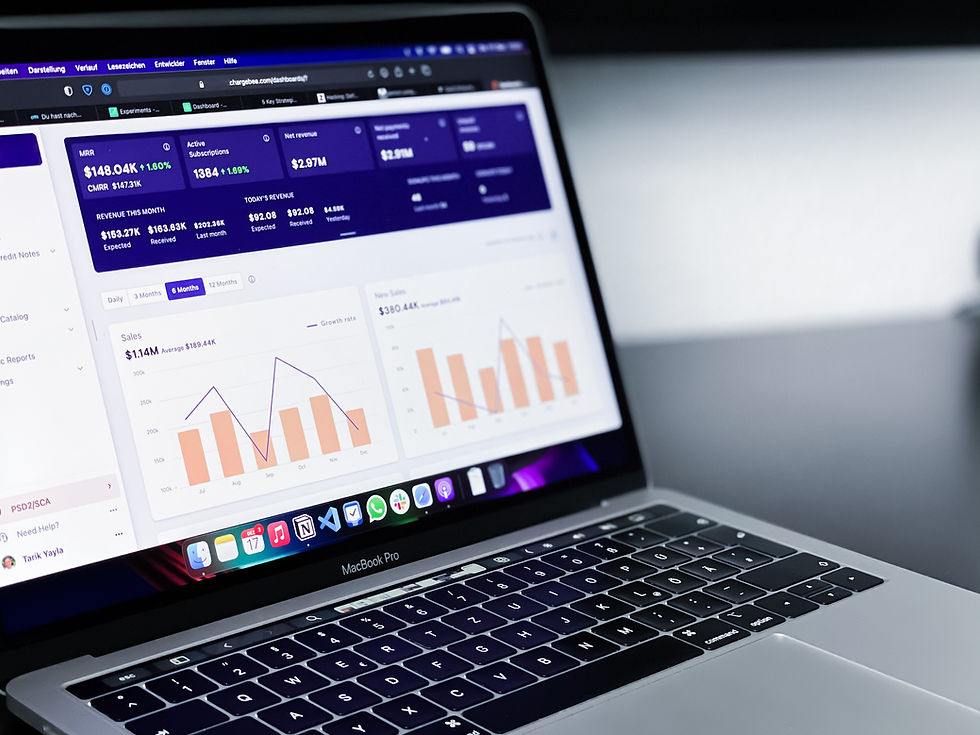Understanding CAC Payback Period and Its Impact on Business Growth
- Travis Hall
- Aug 29
- 3 min read
Updated: Sep 6
In today's competitive business landscape, knowing your key metrics is vital for growth. Among these metrics, the Customer Acquisition Cost (CAC) Payback Period stands out. It indicates how long it takes for the revenue generated from a new customer to cover the investment made in acquiring that customer.
Why does this matter? A reduction of just 15% in your CAC payback period can allow you to reinvest cash, speeding up your growth. In this post, we'll explore the CAC payback period, its significance, and how you can optimize it to enhance your business growth.
What is CAC Payback Period?
The CAC payback period measures how soon a business recovers its spending on acquiring new customers. To calculate this metric, simply divide the total acquisition cost by the monthly revenue from that customer.
For instance, if your company spends $300 to acquire a customer, and that customer brings in $100 a month in revenue, your CAC payback period is three months. Knowing this metric is crucial for managing cash flow and your potential for growth. A shorter payback period allows for quick reinvestment, promoting faster scaling in a competitive marketplace.
Why CAC Payback Period Matters
Understanding your CAC payback period is not just about numbers; it's a reflection of how efficiently you're gaining customers. Here are some reasons this metric is important:
Cash Flow Management: A shorter payback period enables rapid recovery of acquisition costs, improving cash flow. This aspect is especially vital for startups and expanding businesses that require funds to grow their operations.
Attracting Investors: Investors often focus on the CAC payback period when assessing a business. A shorter payback period makes your company more appealing, as it suggests a quicker return on their investment.
Scalability: Reducing your CAC payback period allows your business to scale more quickly. For instance, a SaaS company that lowers its payback period from six months to four can reinvest funds sooner, gaining a competitive edge.
Resource Allocation: By monitoring your CAC payback period, you can better allocate resources. You'll be able to pinpoint which marketing channels yield the highest return and direct your efforts there.
1-Minute Win: Optimize Your Demo Requests
A quick strategy to enhance your CAC payback period is to refine your "Request a Demo" process. Instead of letting potential customers schedule without qualification, introduce a two-question qualifier. Ask about their company size and primary pain point before allowing them to access your calendar.
In an A/B test, this small adjustment led to an 18% increase in conversion rates to booked calls. Moreover, your sales team saves time by focusing on qualified leads rather than unfit ones.
Dashboard Teardown: Simplify Your Pipeline Stages
Complex pipeline stages can create decision fatigue for your team. Streamlining your pipeline into three main stages—Awareness, Evaluation, and Close—can lead to quicker identification of bottlenecks.
This simplification can help your team identify leaks in the pipeline twice as fast. When your staff can easily see where potential customers are dropping off, they can take effective measures to enhance conversion rates and shorten the CAC payback period.
Data Myth Busted: Vanity Metrics
Many believe vanity metrics are harmless distractions, but they can detract from what truly matters. Shift your team's focus from metrics like social media follower counts to more significant indicators, such as the visitor-to-lead ratio.
This focus shift can reduce marketing meeting time by as much as 30%. For instance, a $4M SaaS company found that prioritizing actionable metrics streamlined their operations and boosted overall performance.
Ask Dataliction: Where to Start with Metrics
If you're unsure where to start with your metrics, focus on the essentials: Monthly Recurring Revenue (MRR) and Churn Rate. These metrics provide a solid foundation for grasping your business's financial health.
To begin measuring these, pull records from your Stripe and CRM into a simple spreadsheet. If you would like assistance, simply respond with "Spreadsheet," and we’ll provide a free template to help you get started.
Final Thoughts
Understanding and optimizing the CAC payback period is crucial for any CEO aiming for growth. By focusing on this key metric, you can enhance cash flow management, attract investors, and achieve faster scaling and resource allocation.
Implementing straightforward strategies, like refining demo requests, simplifying your pipeline stages, and focusing on actionable metrics, can significantly influence your CAC payback period.
Keep in mind that a shorter payback period not only frees up cash for future investments but also positions your business for lasting success. Take the time to analyze your CAC payback period and make the necessary improvements to drive your business forward.




